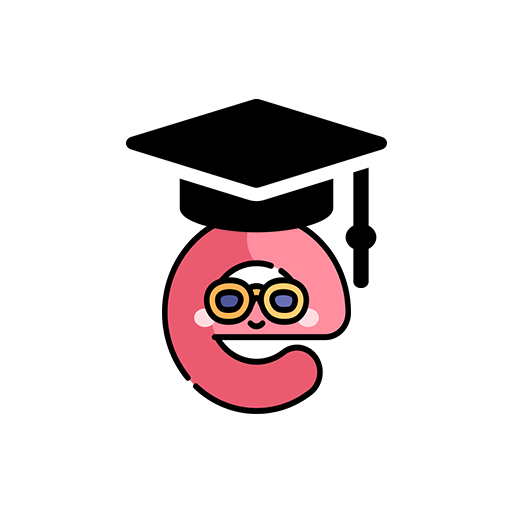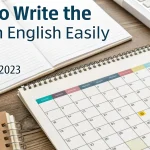Punctuation marks in English are very important in sentences. They help organize sentences clearly and make them easy to read and understand.
Punctuation marks are a set of symbols that writers use between words in sentences. These symbols help the reader understand the sentence better. In this article, we will give you a complete lesson on “Punctuation Marks in English and When to Use Them.” We hope you find it useful!
Punctuation marks are becoming more popular among readers. Many people search for information about them online. Some of the most common questions are:
- How do we use punctuation marks in English?
- What do we put after “Hi”?
- When do we use a comma in English?
- How many punctuation marks are there?
You will find the correct answers to all these questions in this article.
Types of Punctuation Marks in English
There are many different punctuation marks in English. Writers must use them correctly based on the sentence structure. Here are some of the most common punctuation marks:
1. Exclamation Mark (!)
Used to show strong emotions like excitement, surprise, anger, or pain.
- Example: Wow! That’s amazing!
2. Comma (,)
Used to separate words in a list, phrases, or clauses.
- Example: I bought apples, bananas, and oranges.
3. Question Mark (?)
Used at the end of a question.
- Example: What is your name?
4. Period/Full Stop (.)
Used to end a sentence.
- Example: I am a student.
5. Semicolon (;)
Used to connect two closely related sentences.
- Example: I was tired; I went to bed early.
6. Colon (:)
Used to introduce a list, explanation, or example.
- Example: You need the following: a pen, a notebook, and a ruler.
7. Hyphen (-)
Used to join two words together.
- Example: My mother-in-law is kind.
8. Apostrophe (‘)
Used to show possession or contraction.
- Example: Sara’s book is on the table.
punctuation marks in english with examples
Here are some examples to help you understand punctuation marks better:
1. Period (.)
- I am Sara.
- It is a pen.
2. Exclamation Mark (!)
- I am so happy today! (Excitement)
- Ouch! That hurt! (Pain)
3. Question Mark (?)
- Where do you live?
- Who is he?
4. Comma (,)
- If I were you, I would study harder.
- Hassan, can you help me?
5. Semicolon (;)
- The weather is nice; let’s go for a walk.
6. Colon (:)
- She bought three items: a dress, shoes, and a bag.
7. Apostrophe (‘)
- I’m happy. (= I am happy.)
- He’s a teacher. (= He is a teacher.)
8. Hyphen (-)
- My sister-in-law is visiting us.
Exercises on Punctuation Marks
Exercise 1: Add the Correct Punctuation Mark
Fill in the blanks with the correct punctuation mark:
- What is your favorite color ___
- I love reading books ___ especially novels and history books
- Wow ___ That was an amazing performance
- My best friends are Ali ___ Sarah ___ and John
- She said ___ I will meet you at 5 PM
- He is a great player ___ he practices every day
- This is my brother ___ James
- I can’t believe it ___ you won the competition
- They’re going to the park ___ aren’t they
- I need some groceries ___ milk ___ eggs ___ and bread
Exercise 2: Choose the Correct Answer
Select the correct punctuation mark for each sentence:
- What do we use at the end of a question?
- a) . (Period)
- b) ! (Exclamation Mark)
- c) ? (Question Mark)
- Which punctuation mark do we use to list items?
- a) , (Comma)
- b) : (Colon)
- c) ‘ (Apostrophe)
- Which punctuation mark shows strong emotions?
- a) ? (Question Mark)
- b) ! (Exclamation Mark)
- c) ; (Semicolon)
- Which punctuation mark connects closely related sentences?
- a) . (Period)
- b) ; (Semicolon)
- c) , (Comma)
- Which punctuation mark shows possession?
- a) , (Comma)
- b) ‘ (Apostrophe)
- c) . (Period)
Exercise 3: True or False?
Decide if the following statements are True or False. If false, correct the mistake.
- We use a comma to end a sentence. (True / False)
- A question mark is used at the end of a statement. (True / False)
- An exclamation mark is used to show surprise or excitement. (True / False)
- A period is placed at the end of a question. (True / False)
- An apostrophe is used to indicate possession or contractions. (True / False)
Exercise 4: Rewrite with Correct Punctuation
Rewrite the following sentences with the correct punctuation:
- where are you going
- my mother bought apples bananas oranges and grapes
- its a beautiful day today
- i cant believe you did that
- he said lets meet at 7 pm
How to Pronounce Punctuation Marks
- Period / Full Stop (.) → peer-ee-uhd / full stop
- Exclamation Mark (!) → ex-kluh-may-shun mark
- Question Mark (?) → kwes-chun mark
- Comma (,) → kom-uh
- Semicolon (;) → seh-mee-koh-lun
- Colon (:) → koh-lun
- Apostrophe (‘) → uh-pos-truh-fee
- Hyphen (-) → hy-fun
We have explained the most important punctuation marks and how to use them. These marks help make sentences clearer and easier to read. We hope this lesson helps you understand punctuation in English better!
Read this article: Cracking the Code: A Beginner’s Guide to English Vowels




